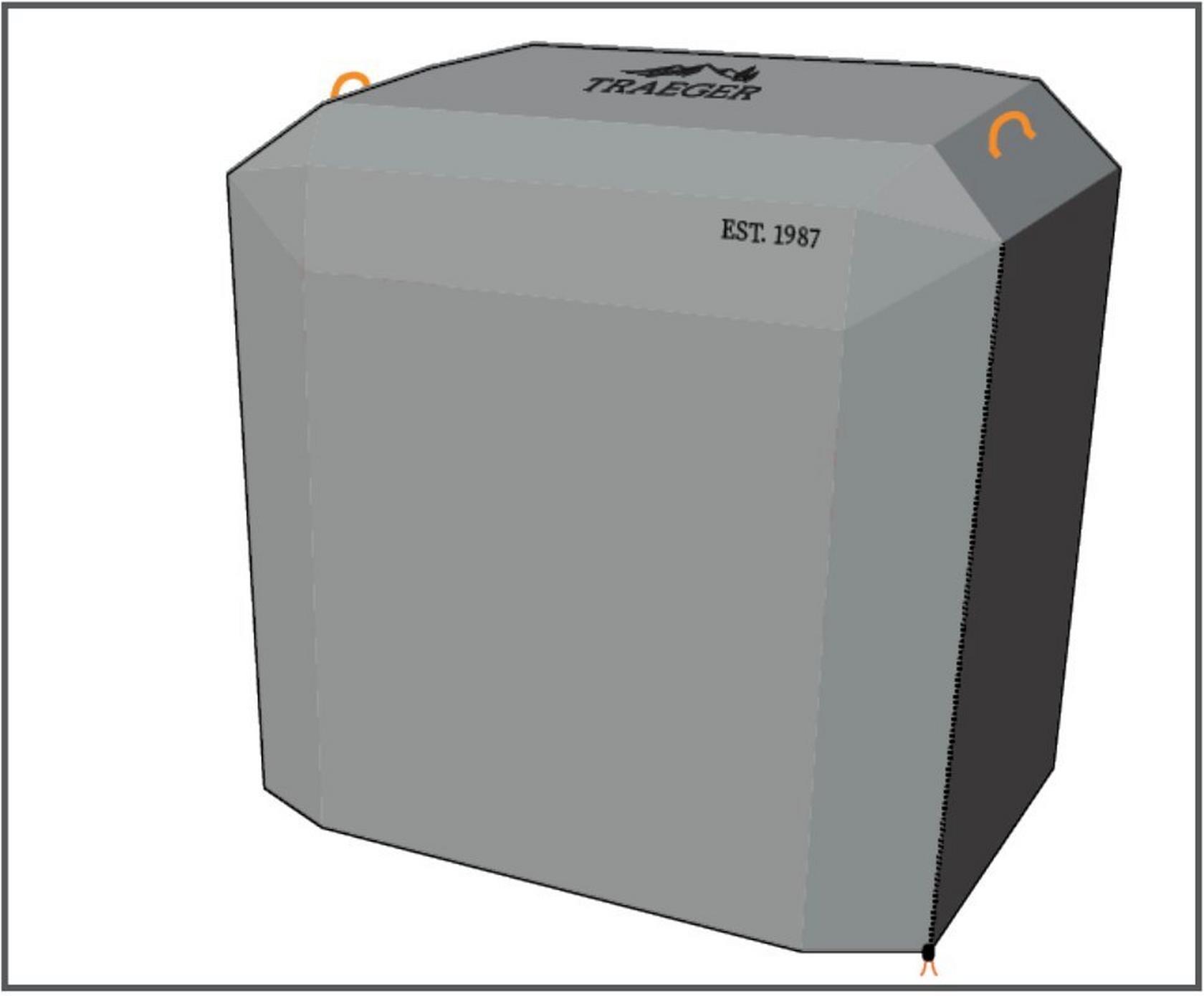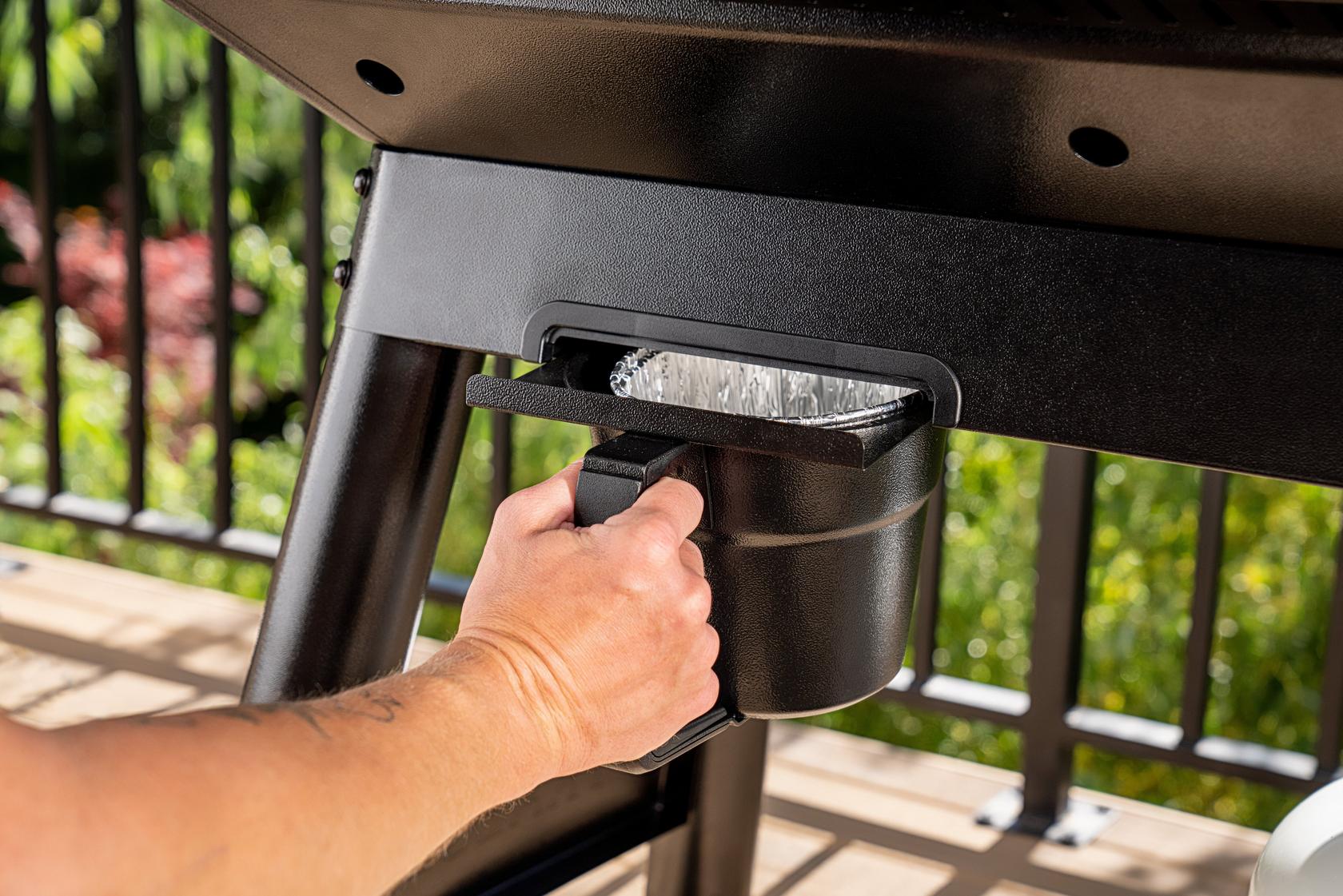
If you want to keep cooking up a storm with your Traeger Flatrock grill, it's essential to make sure it stays clean and well-maintained. With this expert guide, you'll learn all the steps for how to clean a flat top grill, how to prevent rust, and how to store it.
When Should You Clean Your Flat Top Grill?
You should clean your Flat Top Grill after or before each cook. We recommend it after when the griddle is still hot as it makes it easier.
Clean your Flat Top Grill and replace the grease keg liner regularly. Never remove the grease keg until the Flat Top Grill has completely cooled.
Do not close the lid when operating or hot. Let the Flat Top Grill cool completely before closing.
How to Clean a Flat Top Grill
Tools Needed:
To clean your Flat Top Grill cooktop, you will need the following:
- A Traeger® Flatrock Flat Top Grill Scraper or another scraping tool
- A clean cloth or paper towels
- Tongs
- Traeger® Flat Top Grill Seasoning & Cast Iron Conditioner or canola oil.
Cleaning Your Cooktop
- If the grill is not already hot, heat up the cooking surface on medium heat for 10 minutes.

2. Using a scraper, scrape the entire cooking surface clean, directing any bits of food and grease into the grease chute. For stuck on bits, allow them to char, then try scrpating again. if necessary you can use a little water on the cooktop to help dislodge stubborn bits.
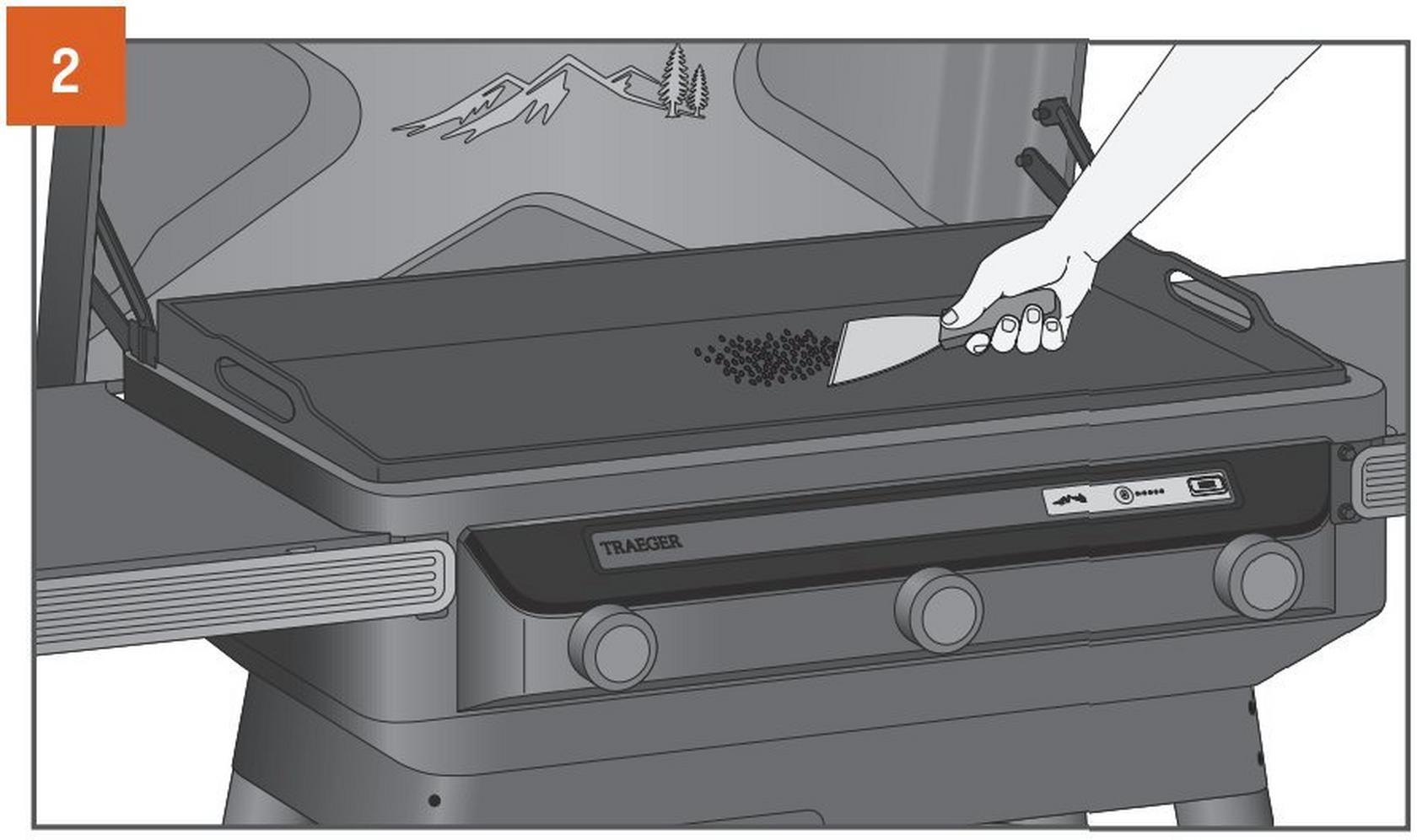
3. Apply a thin layer of Traeger® Flat Top Grill Seasoning & Cast Iron Conditioner or a high-smoke-point oil like canola, grapeseed, or flax oil. Using tongs clasping paper towel, spread the oil to cover the entire cooktop, includig the sidewalls. Heat until the smoking ends, about 10 minutes. This mini re-seasoning helps protect the cooktop from rusting.
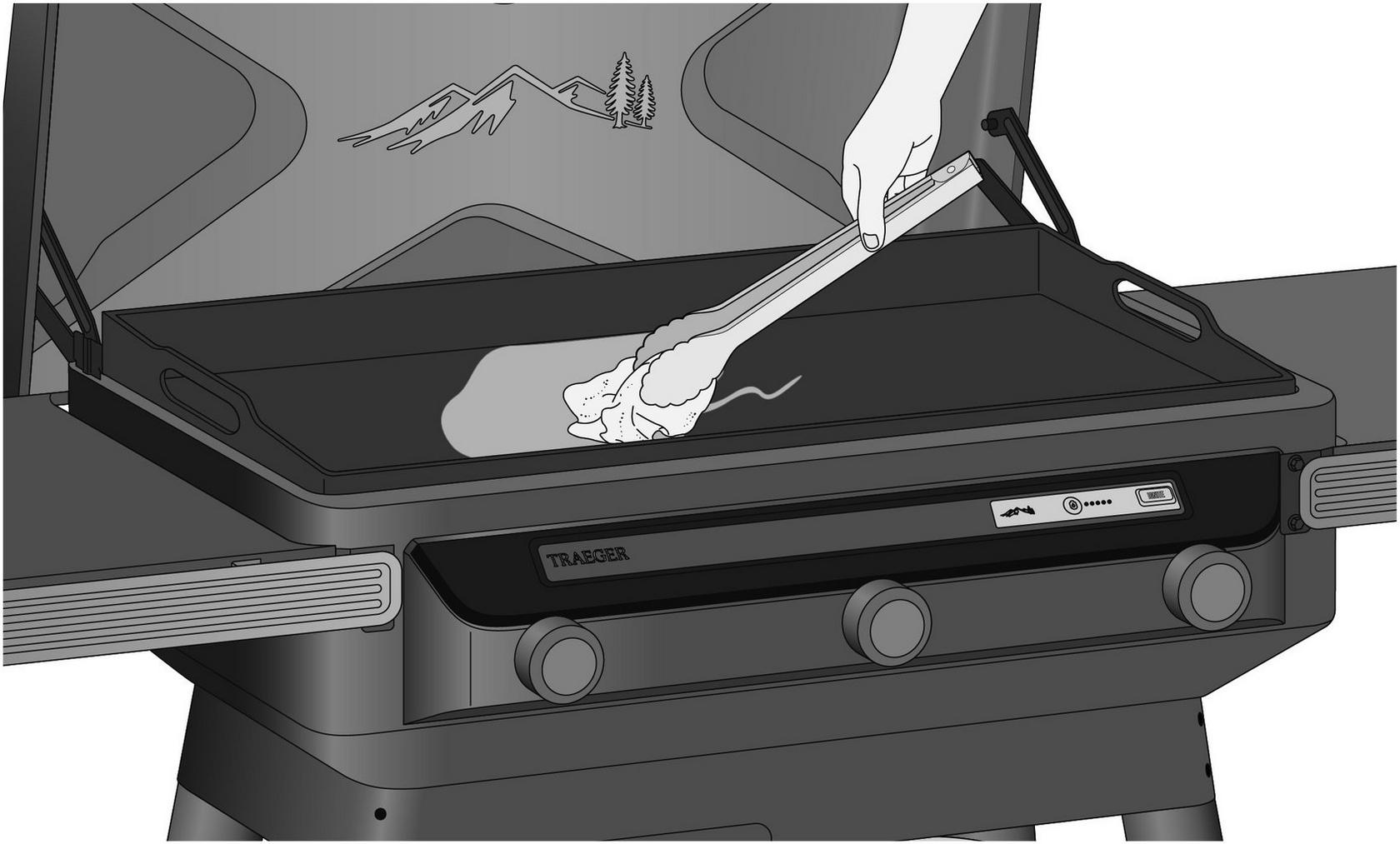
4. Turn all knobs to the OFF (o) position and close the propane tank valave. Let the flat top cool completely before closing the lid. To further protect it from the elemants, cover it with a grill cover.
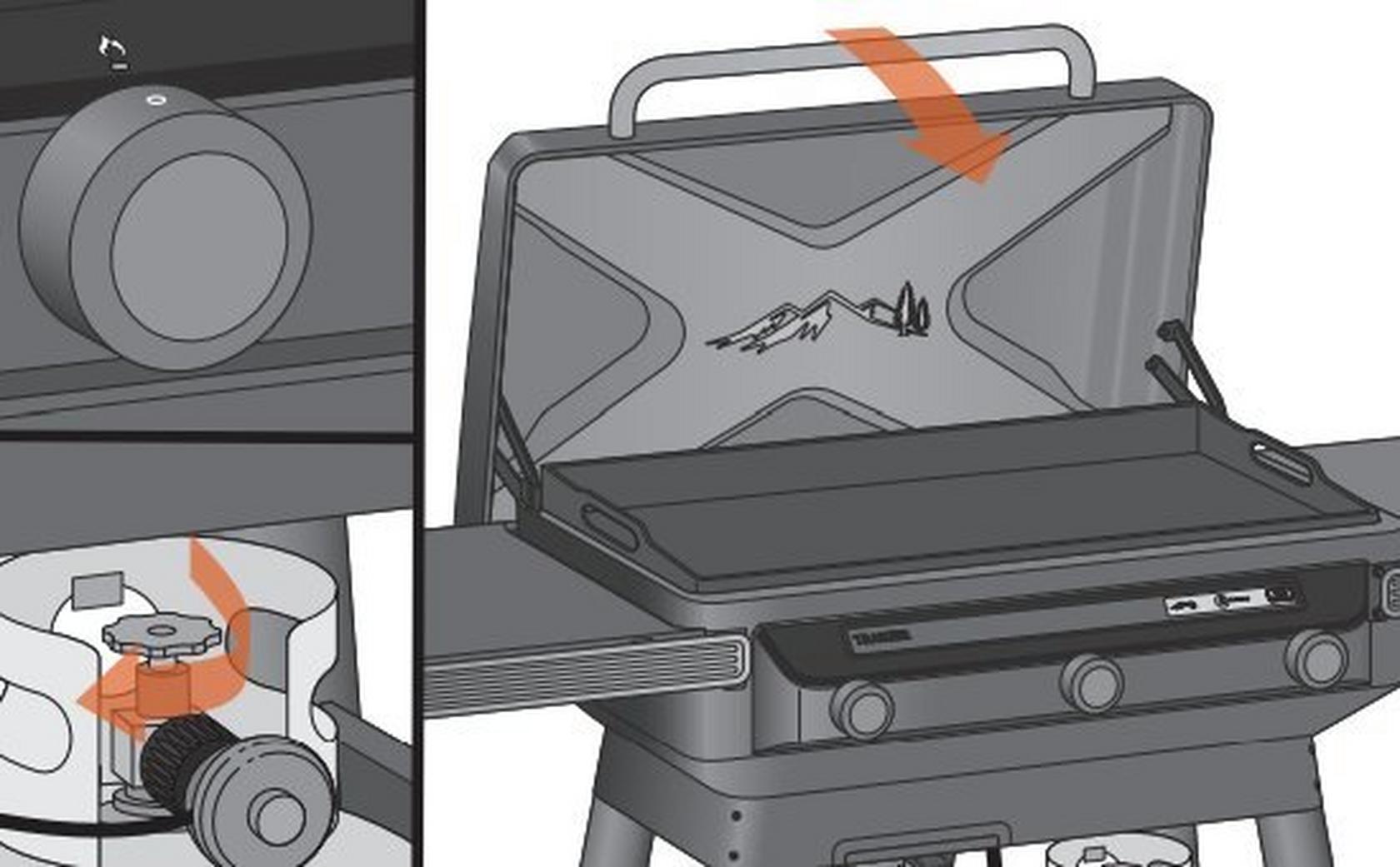
To clean the body of the Flat Top Grill, turn off the grill and let it cool completely.
Once cool, use a cloth or paper towel and Traeger® All Natural Cleaner to wipe any messy areas on the Flat Top Grill body.
DO NOT use Traeger® All Natural Cleaner or any other cleaning solution on the cooking surface.
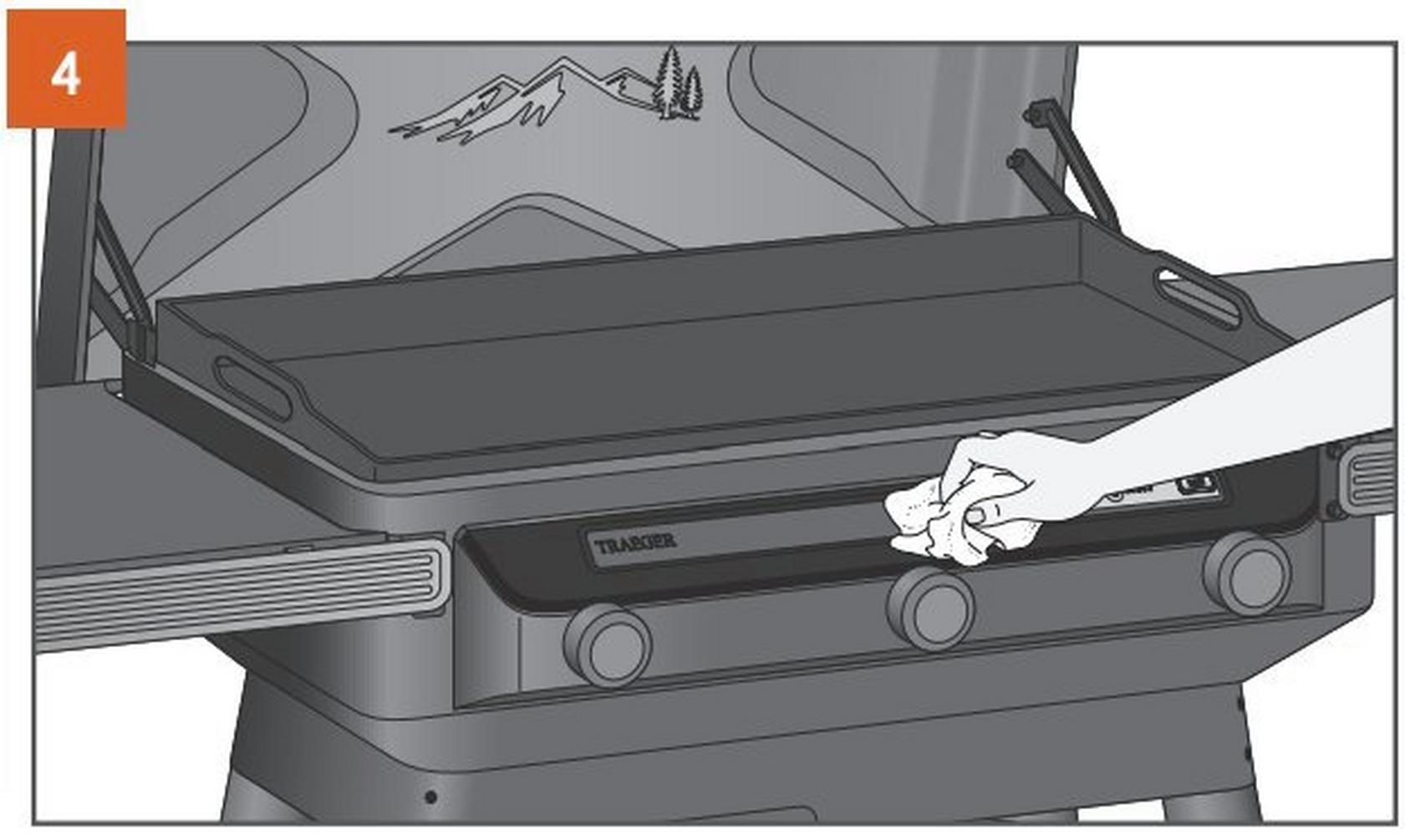
5. If needed, empty the EZ-Clean Grease Keg and install a new Traeger® keg liner.
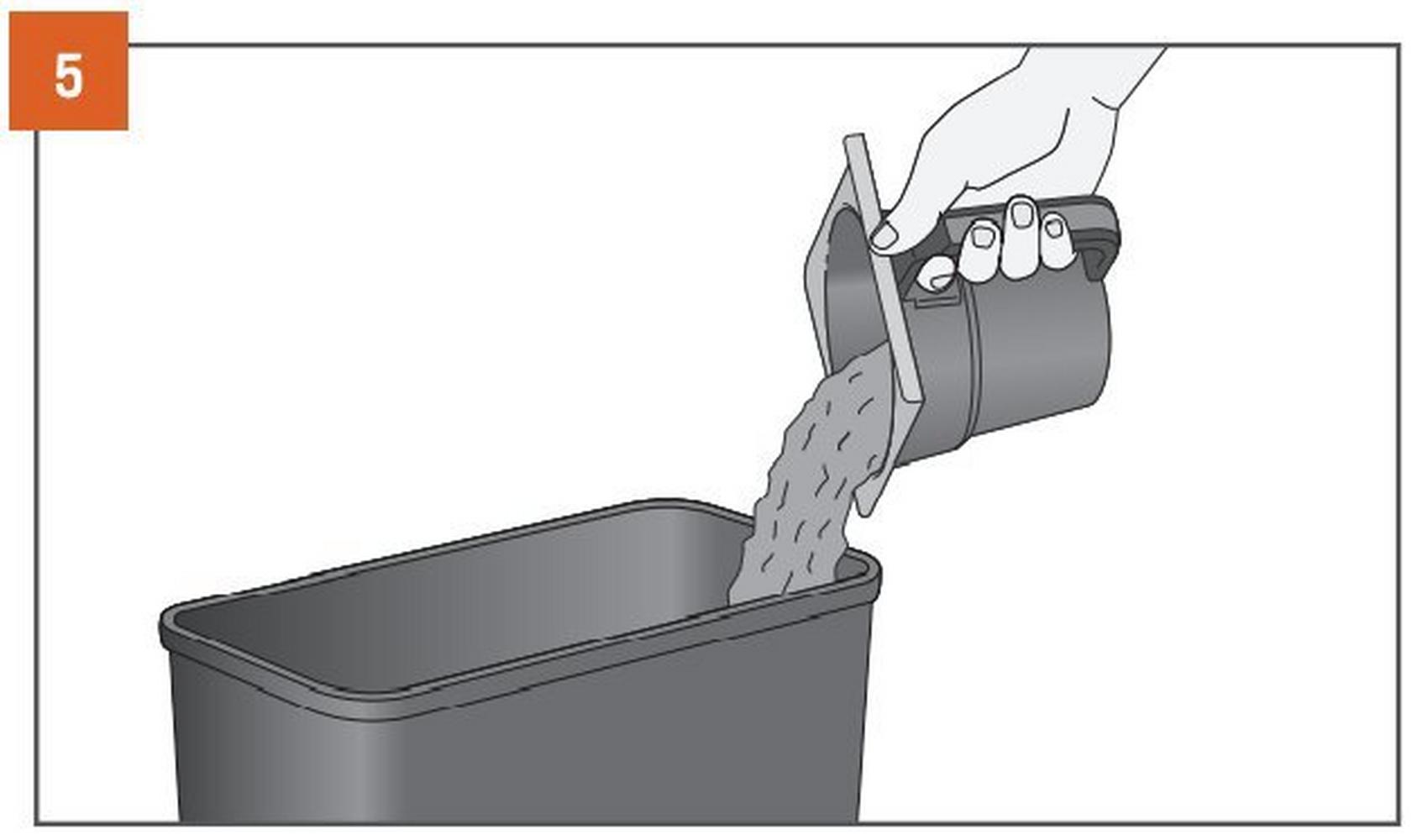
6. Once the Flat Top Grill is completely cool, cover it with a Traeger® Flat Top Grill Cover.
How to Clean Rust Off Your Flat Top Grill
A good initial seasoning and post-cook seasonings are crucial for preventing rust; however, if your Flat Top Grill becomes rusty, follow these steps:
1. Use a green scouring pad and water to remove rust. If rust cannot be removed with the green scouring pad, you can use 220-grit sandpaper to remove rust from affected areas.
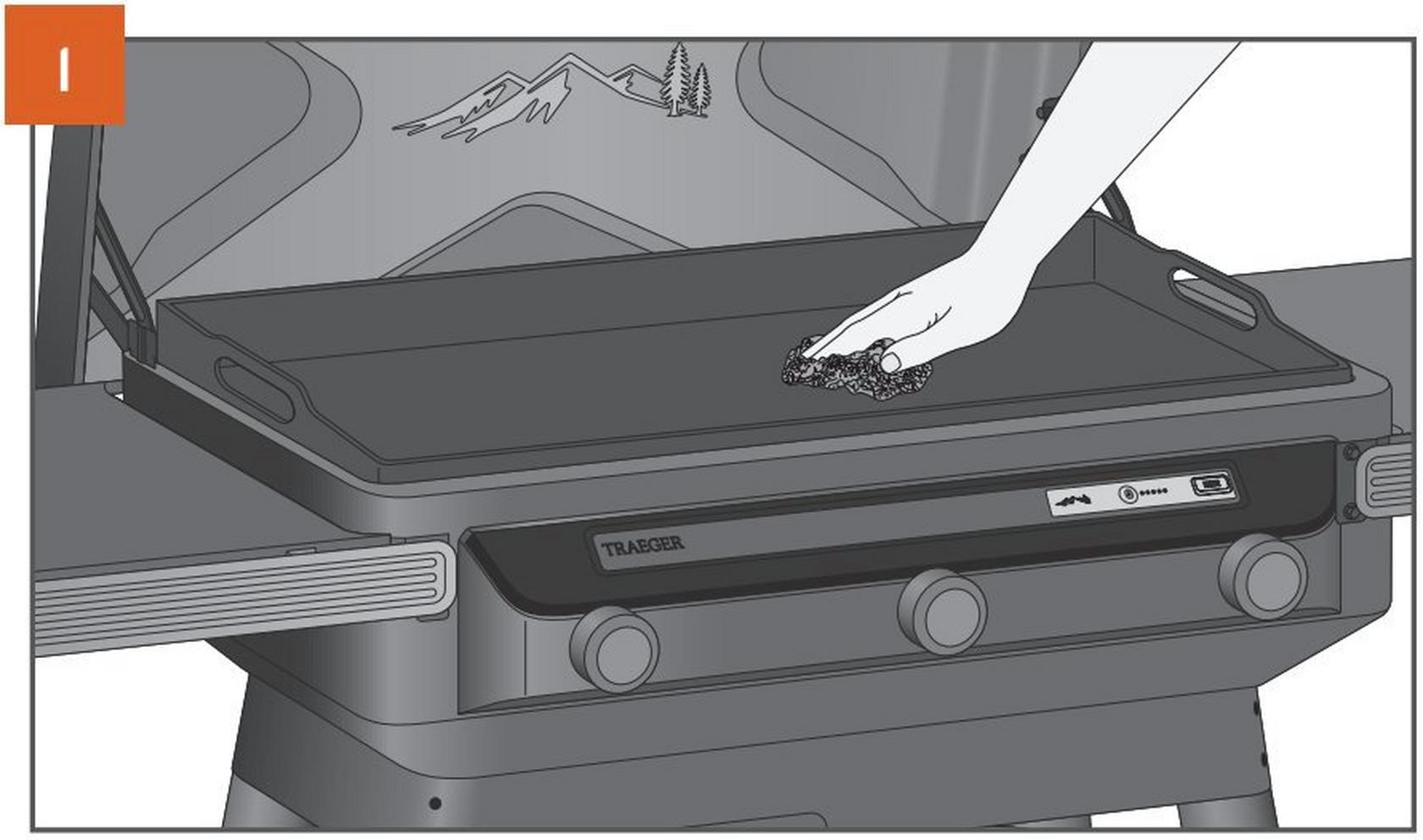
2. Using water and a cloth, wipe off all of the rust residue. The cooktop should be free of any loose debris created in Step 1.
Wipe up all water from this process with a clean, dry towel or cloth. Before performing Step 3, make sure no water is present on the cooking surface. Do not attempt to evaporate the excess water by heating the grill.
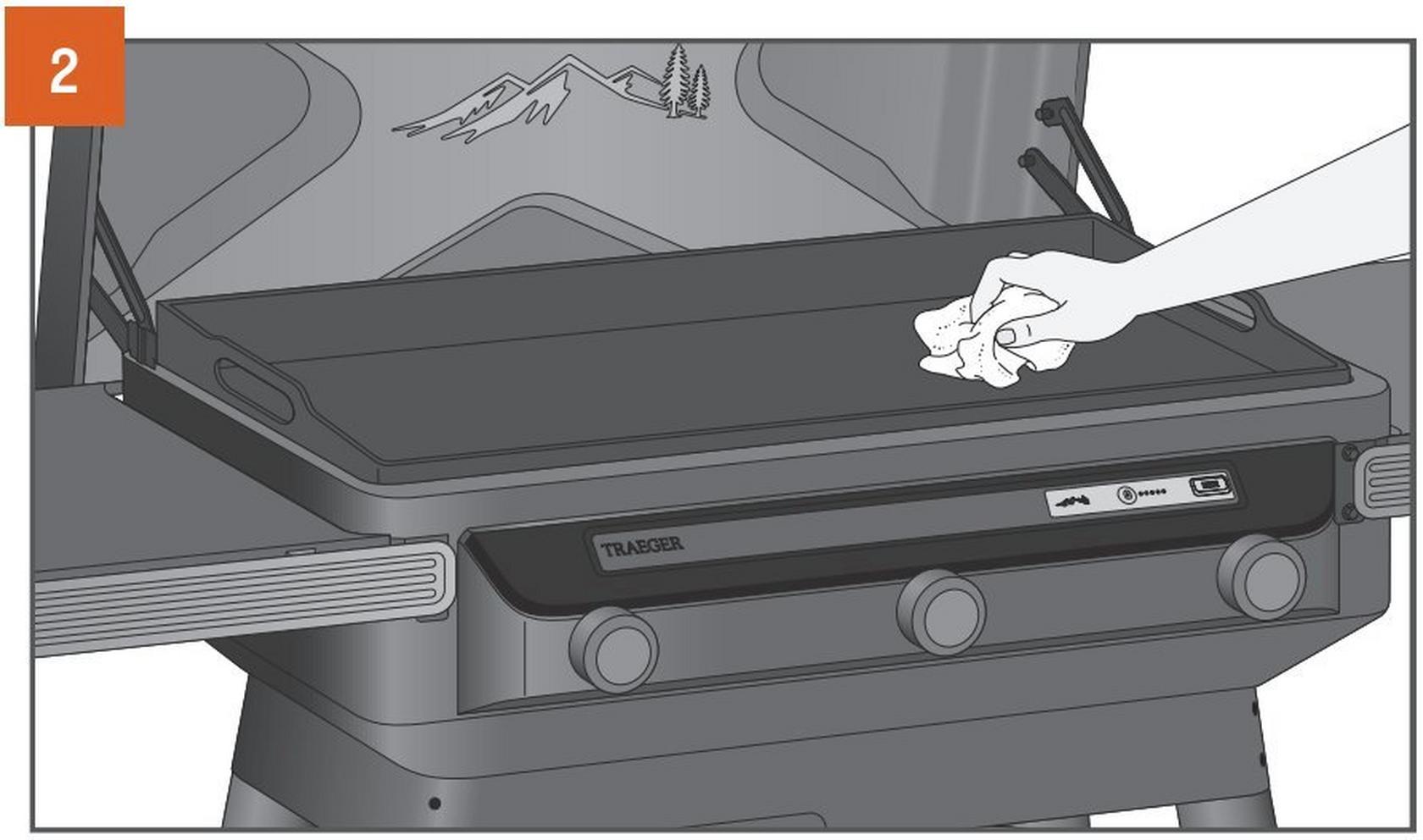
3. Re-season your cooktop
Cleaning Your Grill Burners
Sometimes grime and/or insect debris such as spider webs accumulate in the burner tube or portholes, especially after periods of non-use or storage. A clogged tube can lead to poor performance or fire beneath the appliance.
1. Remove the burners from the Flat Top Grill by unscrewing the two fasteners on the burner brackets. With the burner removed, insert a pen/pencil into the clogged burner inlet hole to clear out any debris that may have accumulated.
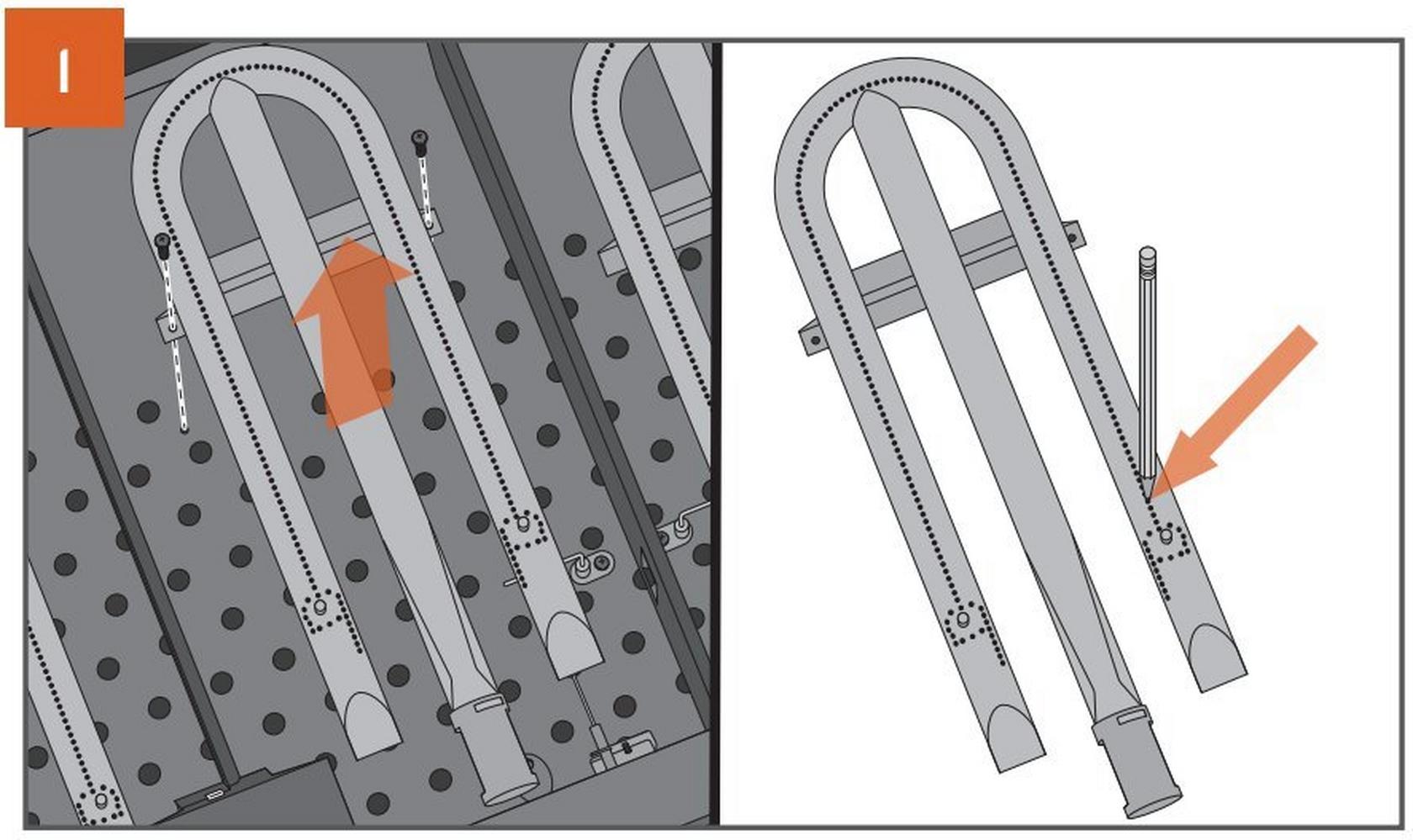
2. When storing the Flat Top Grill or before an extended period of nonuse, remove the burners and wrap them with aluminum foil to reduce the risk of insects entering the burner holes.
Remove all foil before you reattach the burners and use the Flat Top Grill again.
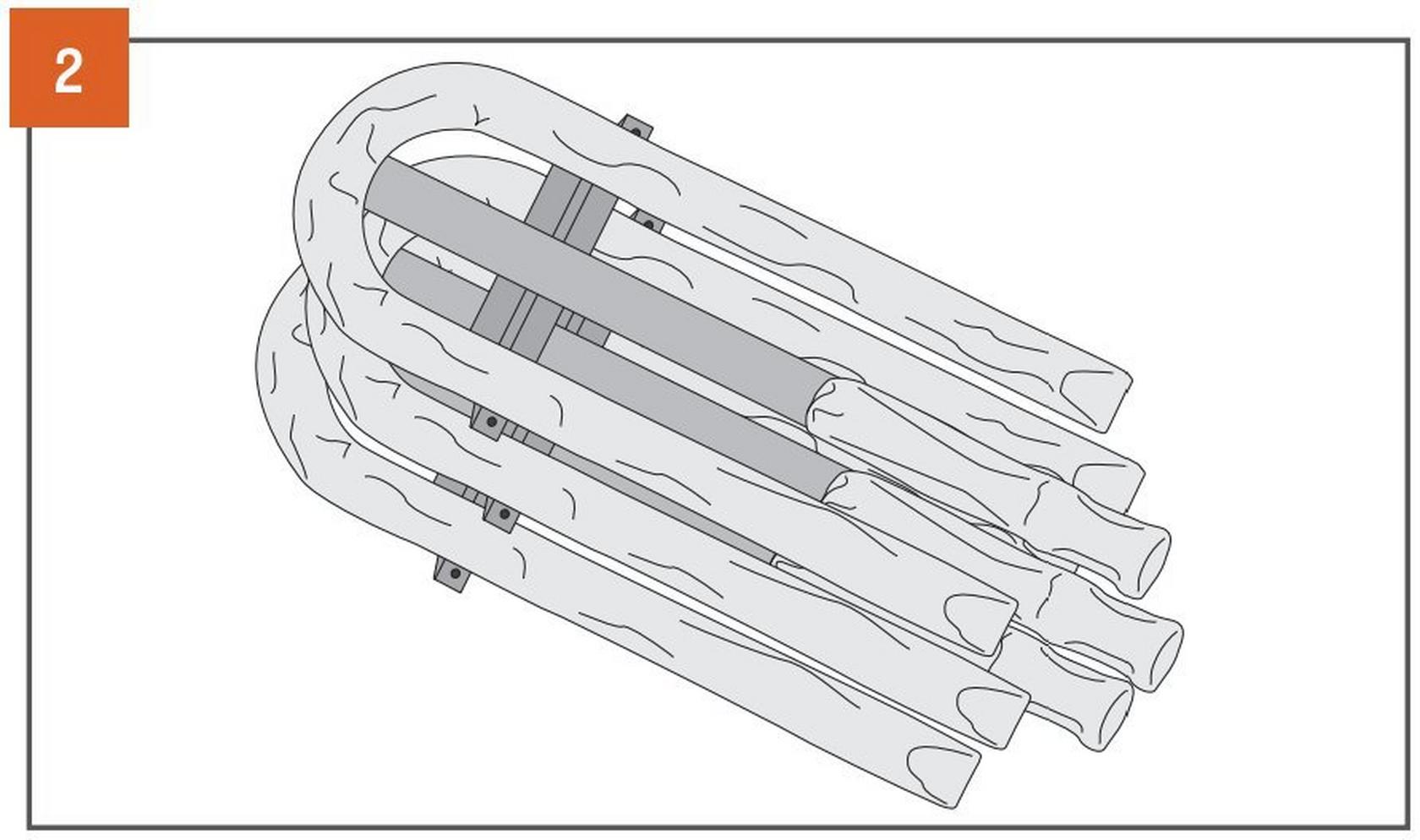
Storing Your Flat Top Grill
Your Flat Top Grill can be stored in two orientations:
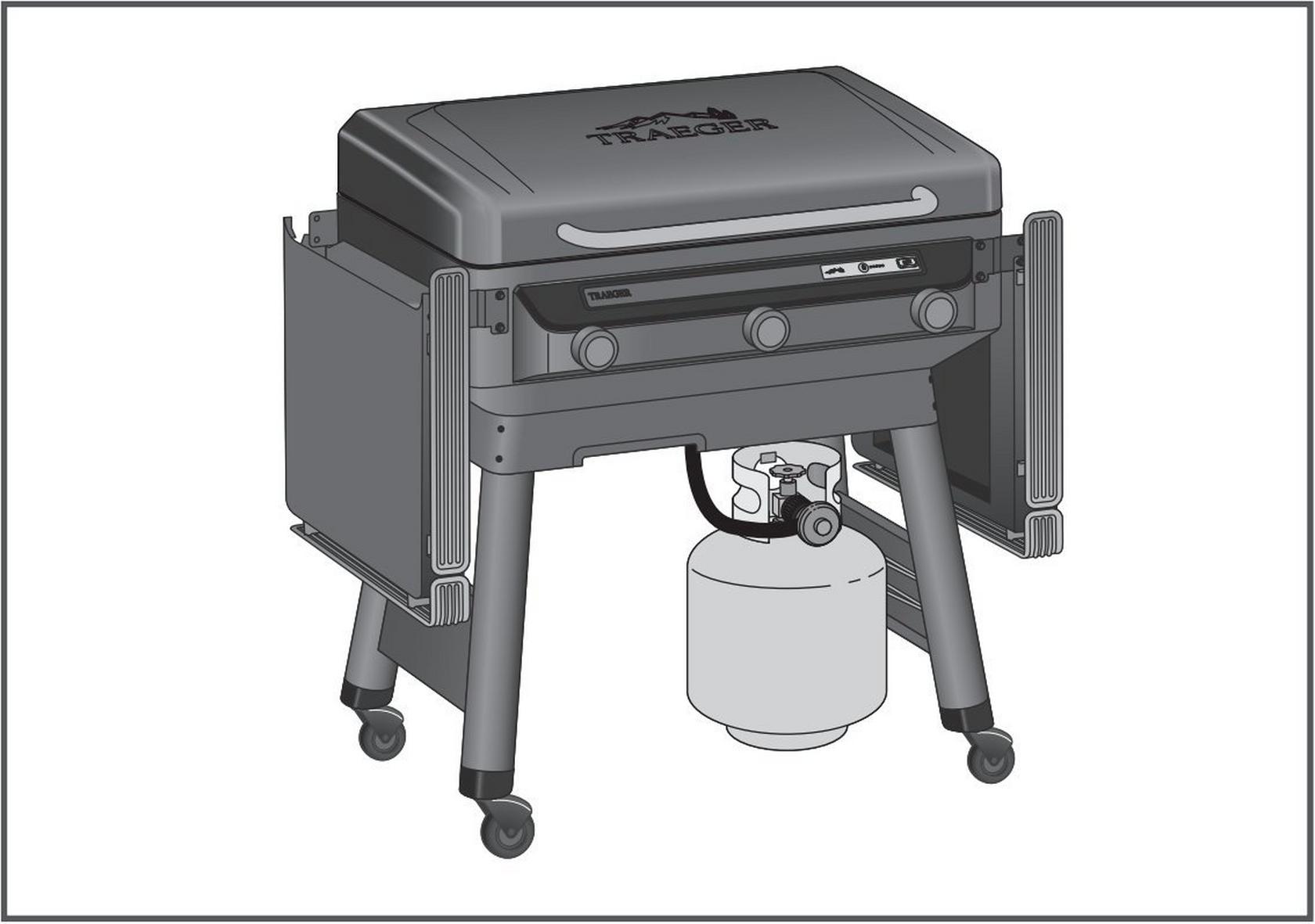
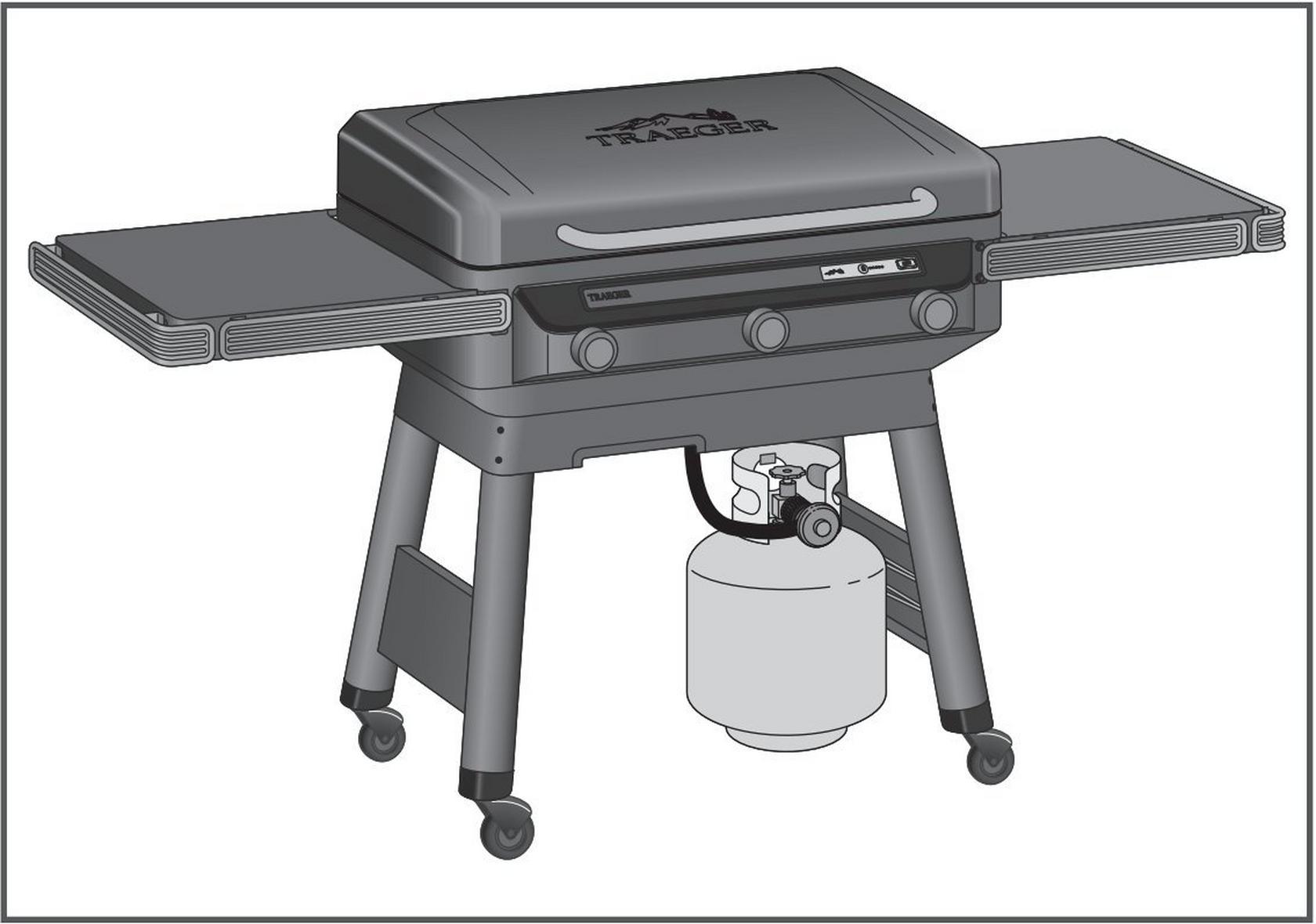
Use the Traeger® Flatrock Flat Top Grill Cover for protection when storing. When using the Traeger Flatrock® Flat Top Grill Cover, the shelves must be folded down.
If living in a region with temperatures that go below -20°F/-29°C, store the Flat Top Grill in a warmer area like your garage during those colder times of the year.
